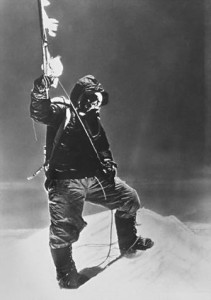Book review by Chris Milne, Sports Physician Hamilton, New Zealand
*Please note, neither BJSM nor Chris are sponsored to endorse this book

Ever wanted to know how important exercise physiologists can be? Then read Everest – The First Ascent. Written by the daughter of Griffith Pugh, the physiologist who accompanied the successful 1953 expedition, it provides a unique perspective that should be of particular interest to the exercise physiologists and clinicians who read BJSM.
Lest you think it is purely a laudatory account by an admiring daughter, I can assure you that it is not. The book opens with Harriet, the relatively estranged daughter, being present at a lecture given 10 years ago by Michael Ward, the Everest expedition doctor in 1953. By this stage Pugh was old and wheelchair bound. Harriet listened, transfixed, as she heard her father’s contribution to the Everest expedition described in glowing terms. You will be too as you get into this book, he was truly the unsung hero of Everest.
Prior to the 1953 expedition there had been numerous attempts on Everest but all had been failures due to a variety of reasons. The Swiss got close in 1952 with extensive use of supplementary oxygen and it Pugh’s recognition of the importance of oxygen was possibly the most critical contribution to the success of Sir John Hunt’s expedition in 1953. Hillary and Tenzing used oxygen at a rate of 3L/min (they were originally budgeted 4L/min but supplies ran short) and this undoubtedly helped them climb at a faster rate than would have been possible without oxygen.
Pugh’s contributions were not limited to oxygen alone, however. He also designed some particularly well-insulated climbing boots and double-layer air mattresses plus specially constructed tents to withstand the winds that prevail at high altitudes. He also perfected cookers that would function well up high mountains.
However, Everest was not the end of it – rather, an important stepping stone in Pugh’s career. Buoyed by the success of innovations in 1953 he went on to make a substantial contribution to high altitude medicine, with research carried out at the Silver Hut perched at high altitude on Everest; it has subsequently been relocated to Darjeeling, where it stands to this day. He realised the importance of keeping the scientists well fed and watered, and readers of the book will be impressed to see the range of food and drink that he had set up.
Pugh was also much in demand once the 1968 Olympics were allocated to Mexico City. The events were held at an altitude of 8000 feet and his predictions regarding athlete performances were pretty much spot on. As he thought, the sprinters and jumpers would do well and there would be a progressive fall off in performance as running distances got longer and the athletes became more dependent on oxidative metabolism. He also made important contributions in research into hypothermia using cross-Channel swimmers as his subjects.
On a personal basis, his daughter comments that her father could be “remote and irascible” and he frequently clashed with his superiors at the Medical Research Council. However, he had a few well-placed supporters who recognised his particular genius and enabled him to continue his work relatively unfettered by administrative demands.
As a Kiwi reading the book I was intrigued by his relationship with Sir Edmund Hillary, a national icon in my country. The two men obviously saw things differently: Hillary was a climber in the stoic/heroic tradition; Pugh was a practical scientist who also happened to be a pretty competent climber, having served as an instructor for the School of Mountain Warfare in the Lebanon. He also skied at the Olympics and, therefore, saw the mountaineers as fellow athletes rather than as lab rats. Even though there were tensions, the mutual respect between the two men shines through.
So who should read this book? Anyone with an interest in the practical application of sports science, i.e. every reader of BJSM. Also those who wish to see how a man could be rather neglected in his lifetime and yet gain true recognition for his work many years later. Serendipity is a wonderful thing and it is only due to the survival of Pugh’s personal papers and his daughter’s labour of love that we have got to read of Pugh’s immense contribution. Truly an inspiring book. Read it.
Title: Everest – The First Ascent
Author: Harriet Tuckey
Publisher: Random House, 400 pages
Price: £20
ISBN: 9781846043499